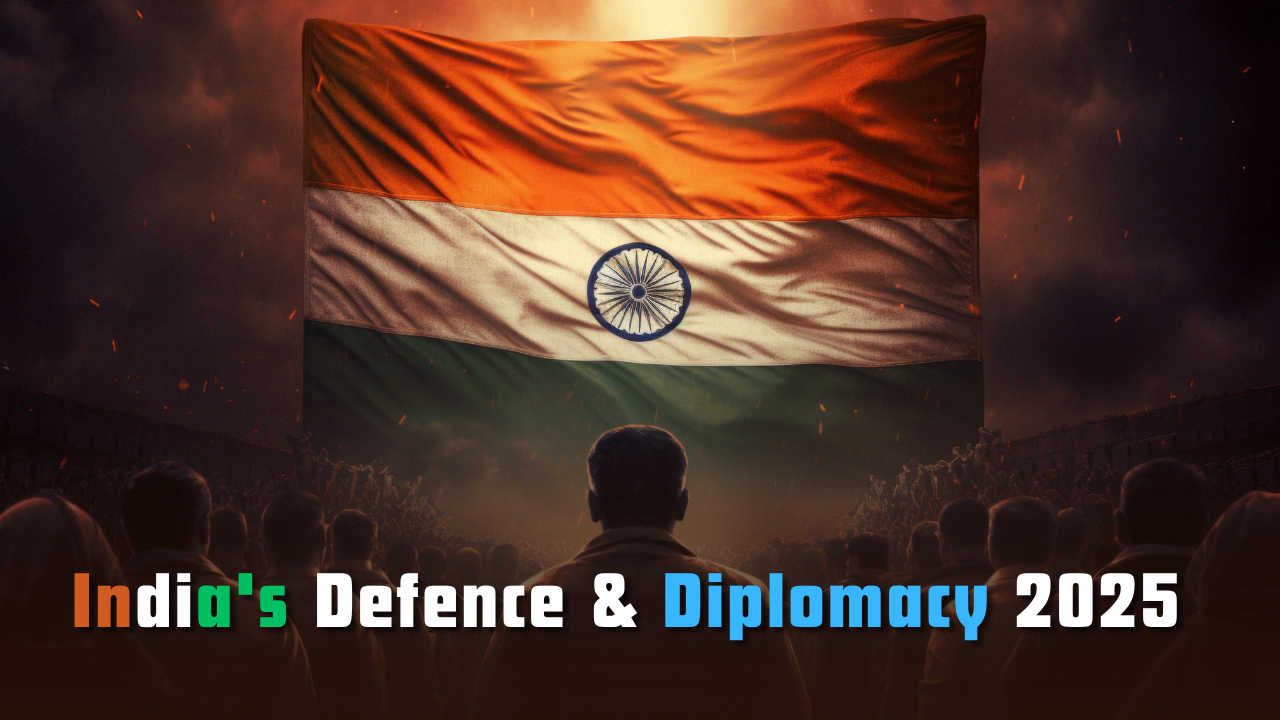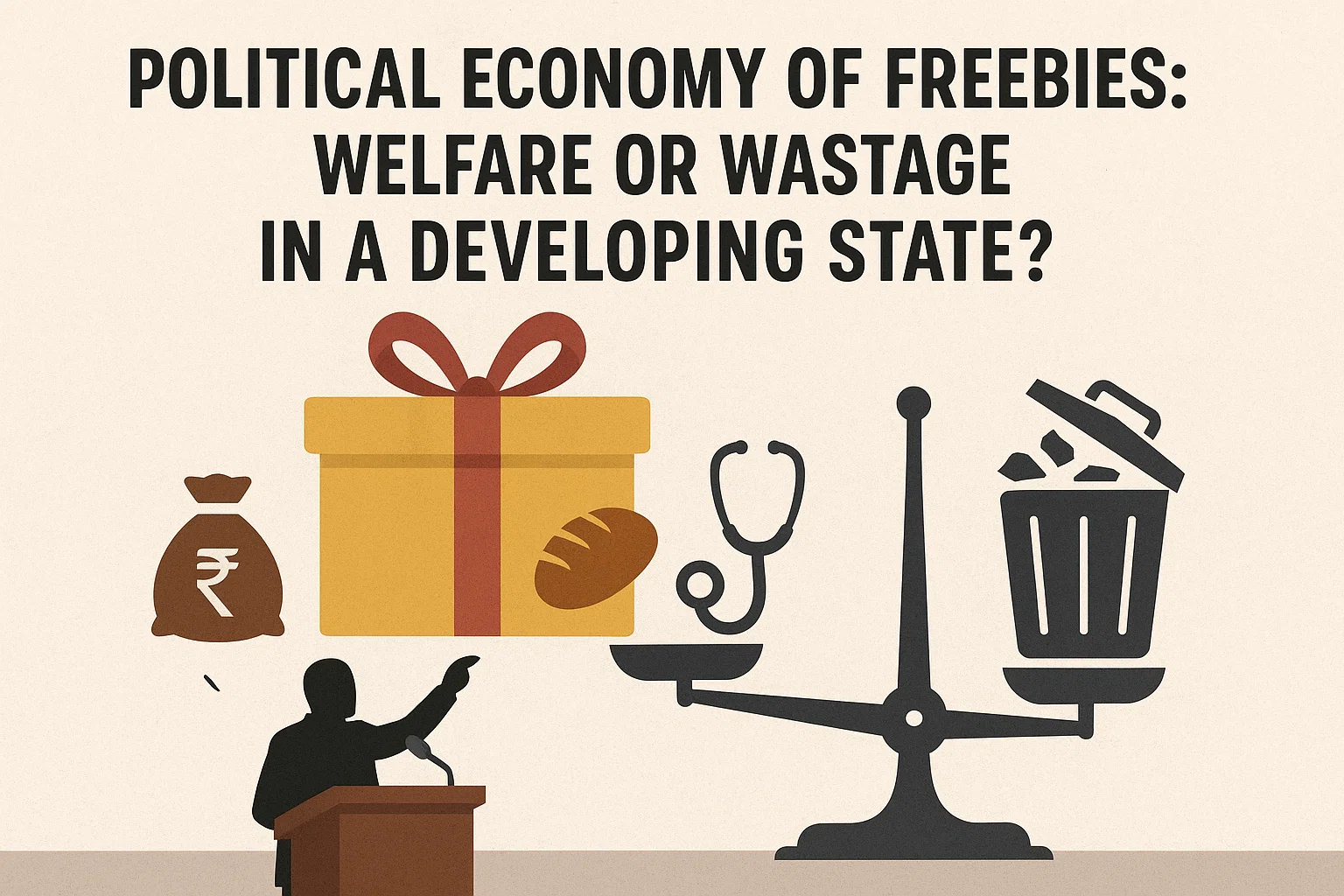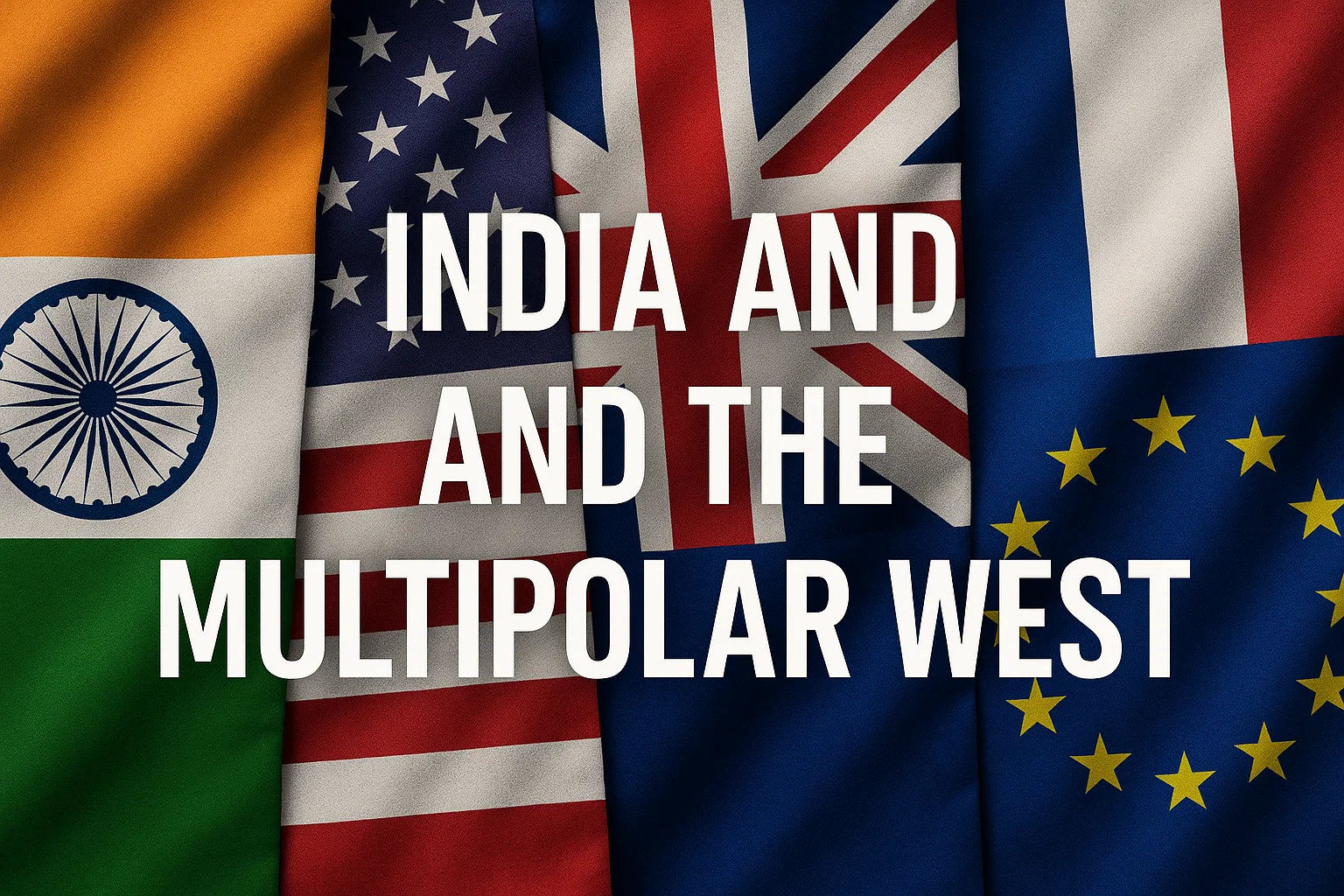India’s Defence & Diplomacy 2025: Strategic Geopolitical Balance
India’s Strategic Balance: Defence and Diplomacy in 2025
Context: In the aftermath of Operations Sindoor and Rising Lion, India’s strategic challenges call for a careful balance of force and diplomacy.
Introduction
What does it take for a rising power to survive in an era of hidden wars and diplomatic traps? In 2025, India faces its toughest test yet: a silent war with China and Pakistan (Operation Sindoor) on one side, and a volatile West Asia (Operation Rising Lion) on the other. As bullets and backroom deals reshape alliances, India must choose—will it react, or will it outthink its adversaries?
This urgent need for a balanced response is explored in two insightful articles published in The Hindu on July 07, 2025. Ashok K. Kantha’s “The New Battle Challenge of China-Pakistan Collusion” and Priyam Gandhi-Mody’s “India’s Diplomacy is Measured, Not Mute” present different responses for India. Kantha stresses military readiness; Gandhi-Mody values diplomatic restraint. This essay compares both, arguing India needs strength and wisdom to safeguard its national interests.
Strategic Crossroads
The article by Ashok K. Kantha describes the growing military cooperation between China and Pakistan. During Operation Sindoor, Pakistan used advanced Chinese weapons, such as J-10C fighter jets and PL-15 missiles. China also provided real-time help through satellites and intelligence systems. This kind of support had never happened before in open conflict involving India. Kantha warns that this is not just a one-time event but part of a larger strategy. China wants to keep India off balance by helping Pakistan without directly fighting. This makes it hard for India to know when or how to respond. At the same time, China avoids blame because it does not officially join the fight. This is a smart but dangerous way to challenge India.
Kantha further explains that this coordination is more than symbolic. Chinese and Pakistani forces have trained together for years, and now those joint exercises are being applied in real combat. The presence of Chinese-origin air defence systems and drones in Pakistani operations proves this. Cyber-attacks, satellite-based surveillance, and misinformation campaigns have become new tools of war. The old model of a “two-front war” has changed into something more complex: a “one-front reinforced war,” where Pakistan is backed by China in real time without China needing to fight directly.
On the other hand, Priyam Gandhi-Mody looks at India’s role in the West Asian crisis. When Israel and Iran began fighting, India chose not to take sides. Instead, it called for peace and focused on helping its own citizens. Gandhi-Mody argues that this kind of restraint is a sign of maturity. She says that India does not need to speak loudly or act rashly to prove its strength. In fact, by staying calm and thoughtful, India gains more respect in the world. She also points out that many Western countries, while claiming to fight terrorism, continue to support Pakistan for their own gain. These double standards make it harder for India to rely on alliances and force it to chart its own course.
Gandhi-Mody also highlights India’s expanding role in the Gulf. Under Prime Minister Modi’s leadership, India has developed close ties with the Arab world. Some of these nations have become leading investors in India’s economy. In such a context, taking sides in a regional conflict would not only damage diplomatic relationships but could also threaten trade and energy security. Therefore, India’s decision to focus on humanitarian aid, citizen evacuation, and ceasefire diplomacy serves its broader national interests.
Strength and Silence
Both authors agree that India must take action to protect its national interests, but they offer different solutions. Kantha argues that if India does not strengthen its military and prepare for new types of warfare, it will lose its power to deter enemies. His main idea is that the threat from China and Pakistan is now real and cannot be ignored. The old belief that China would stay in the background is no longer true. Kantha believes India must modernise its weapons, improve intelligence, and plan for more complex wars.
He also believes India must update its military doctrines. Old assumptions about limited war or proxy conflicts no longer apply. India must prepare for hybrid warfare, where digital tools, disinformation, and coordinated attacks create confusion and test red lines. This requires better coordination among India’s military branches and improved readiness along both its western and northern borders.
Gandhi-Mody, however, believes that India’s strength comes from its ability to remain independent and not fall into global power games. She says that staying silent at the right time is not weakness but a smart move. India should avoid reacting emotionally and must always think about the bigger picture, especially its economy, trade, and diaspora. If India acts too quickly or speaks out without thinking, it might lose friends or damage its global image. Her main idea is that diplomacy, when used wisely, is just as powerful as military action.
She emphasises India’s unique position as a civilisational state with multiple relationships. India cannot be seen as biased or reactive. Instead, it should continue to show leadership by standing for peace, supporting humanitarian causes, and engaging with both sides in a conflict. This not only preserves strategic space but also enhances its credibility in global forums.
The shared hypothesis between the two is this: If India does not change the way it handles both military and diplomatic threats, it risks losing its power and respect on the world stage. Whether in dealing with Pakistan and China or navigating global conflicts like the one in West Asia, India must be smart, strong, and strategic.
Proof and Perspective
Kantha’s argument is backed by solid facts from the battlefield. He describes how Chinese technology and intelligence helped Pakistan during Operation Sindoor. He also shows how Chinese media and social networks spread false stories to support Pakistan’s side. These are not small actions. They are signs of a larger plan to weaken India without starting a full war. Kantha points out that this kind of “grey-zone warfare” is the new normal. It allows China and Pakistan to test India’s limits while avoiding global blame. He also notes that India now has to guard both its borders with large military forces. This puts a big strain on troops, money, and planning.
Kantha’s warning is especially important because it draws attention to the gaps in India’s defence planning. He argues that India needs to invest in technologies like cyber defence, electronic warfare, and unmanned systems. He also mentions that the decline in defence spending over the last decade must be reversed. Without stronger budgets and clearer strategies, India risks being caught off guard again.
Gandhi-Mody supports her argument with examples of India’s actions in West Asia. She mentions how India helped its citizens, gave humanitarian aid, and avoided taking sides in the Iran-Israel conflict. She also discusses how India has built strong ties with many Arab countries through trade and investment. Gandhi-Mody argues that by not jumping into conflicts, India protects its relationships with all sides. She also points out the unfair actions of some Western powers, who claim to support peace but still back countries like Pakistan. These powers are more interested in using Pakistan for their own battles than in solving real problems. India must not fall into these traps.
Her position is also supported by India’s recent record at global institutions. India has taken bold stances on multilateral reforms and has acted as a voice for the Global South. Being seen as balanced and non-aligned increases its moral power. In the long run, this helps India play a leadership role in world affairs.
Both authors show that India cannot rely on others to solve its problems. Whether through military action or careful diplomacy, India must act in its own interest. This is the main reason their arguments matter.
Limits and Challenges
While both authors make strong points, they also accept that their views have limits. Kantha warns that India should not respond too quickly to provocations. A hasty military strike could play into the hands of Pakistan and China. Instead, India must keep its enemies guessing. He also suggests that non-military actions, like changing water-sharing agreements, might be useful.
Gandhi-Mody accepts that India’s silence may sometimes be misunderstood. People might think that India is too soft or afraid to act. But she believes that silence is better than shouting when it comes to complex issues. She also warns that emotional reactions from the public or media can hurt its long-term goals. People often do not understand the deeper issues and may pressure the government to act unwisely.
Both agree that India must be careful. Being too aggressive or too quiet can both be risky. The real challenge is finding the right balance in each situation.
Common Ground
Despite their different focuses, both Kantha and Gandhi-Mody share some important ideas. First, they both see Pakistan as a long-term problem, supported by outside powers for selfish reasons. Second, they both believe that India must think and act independently. Third, they agree that the world is changing, and India must change with it. They both want India to be strong, respected, and safe, though they offer different paths to that goal.
They also agree that modern conflict is not just about guns and bombs. It includes fake news, diplomacy, trade, and public opinion. This means India must be ready on many fronts. Army generals, diplomats, and media experts all have a role to play. There is no single solution, and India must use all its tools wisely.
Dual Approach
The best way forward for India is to combine the ideas of both authors. This means building a two-track strategy:
- Military Strength: India must modernise its army, improve intelligence, and prepare for new types of warfare. This includes using drones, satellites, and cyber tools. It must also train its soldiers for quick and smart responses. At the same time, India should not fall into predictable patterns. Surprise and flexibility are key. Coordination between the Army, Navy, and Air Force must be improved, and defence procurement must become faster and more transparent.
- Diplomatic Wisdom: India must continue to act with calm and confidence on the world stage. It should build strong ties with many countries, not just a few. By staying neutral and helping others, India gains respect and trust. It must also speak up when needed, but only after thinking carefully. India should invest in public diplomacy, use cultural tools to build friendships, and ensure that its message is heard clearly in international forums.
Together, these two tracks will help India face a world full of complex threats and shifting alliances. Military action without diplomacy can lead to isolation. Diplomacy without strength can lead to weakness. But when used together, they form a powerful defence.
Conclusion
In conclusion, the lesson for India is clear: Strength without wisdom is blind, and silence without power is futile. In the chessboard of 21st-century geopolitics, victories will go to those who master both the sword and the strategy. For India, the path ahead is not about choosing between force and diplomacy—it is about wielding them together, with the precision of a surgeon and the patience of a grandmaster. The world is watching. Will India rise to the moment?
Subscribe to our Youtube Channel for more Valuable Content – TheStudyias
Download the App to Subscribe to our Courses – Thestudyias
The Source’s Authority and Ownership of the Article is Claimed By THE STUDY IAS BY MANIKANT SINGH





